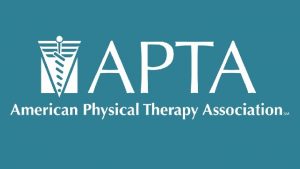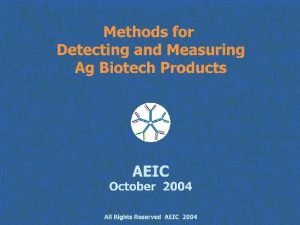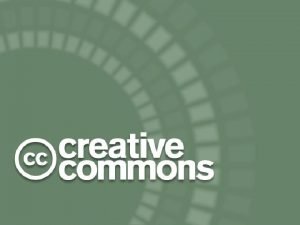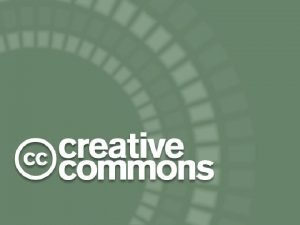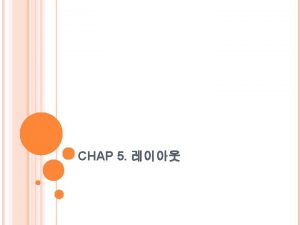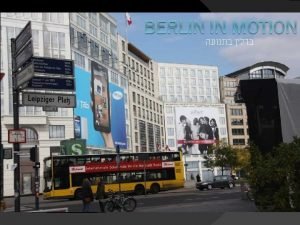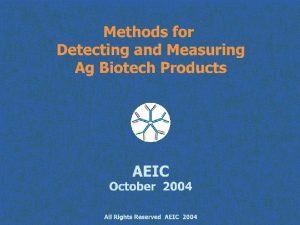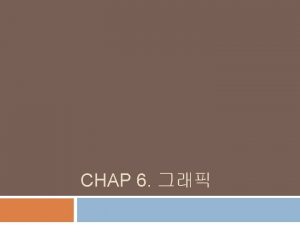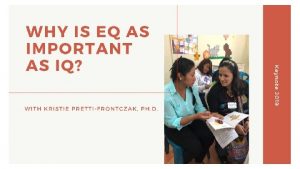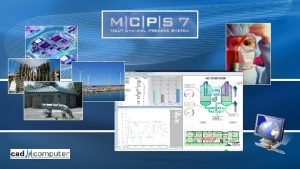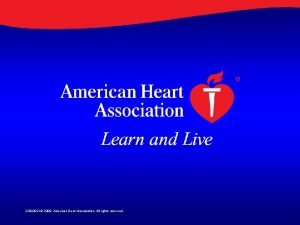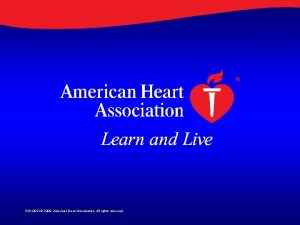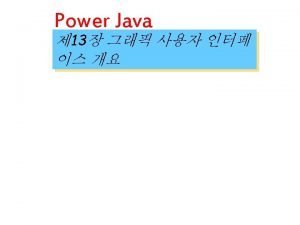2019 American Physical Therapy Association All rights reserved





















- Slides: 21

© 2019 American Physical Therapy Association. All rights reserved.

© 2019 American Physical Therapy Association. All rights reserved. Anatomy From The Inside Out: A 3 D Kinesthetic Learning Method Beth Moody Jones, PT, DPT, Ed. D Stephanie Muth, PT, Ph. D

Disclosure © 2019 American Physical Therapy Association. All rights reserved. • • No relevant financial relationships We would like to thank Anatomy in Clay© and Thieme for their support of this program

Learning Objectives © 2019 American Physical Therapy Association. All rights reserved. • Compare and contrast dissection vs clay modeling to promote anatomy knowledge • Discuss pedagogical advantages of clay modeling • Discuss the use of clay modeling to facilitate palpation skill • Apply unique active learning technique to improve students’ understanding of anatomy

© 2019 American Physical Therapy Association. All rights reserved. Introduction • The purpose of this program is to examine an active learning method as a supplement to PT gross anatomy dissection. • Participants will use plastic models and clay to create joints from the skeletal system outward to experience this kinesthetic learning method

Why Active Learning? © 2019 American Physical Therapy Association. All rights reserved. • Increased content knowledge, critical thinking and problemsolving abilities compared to traditional lecture-based delivery • Increased enthusiasm for learning in both students and instructors • Improved development of critical and creative thinking, problemsolving, adaptability, communication and interpersonal skills Anderson et al, 2005 Thaman et al. , 2013

© 2019 American Physical Therapy Association. All rights reserved. The Flipped Classroom • Curated assigned readings prior to class • Short on-line lectures • Class time spent discussing and applying material

The Flipped Anatomy Classroom © 2019 American Physical Therapy Association. All rights reserved. • Key Findings: – Students spent similar amount of time with on-line materials as was previous spent in class prepping for lab – The 3 D anatomy videos and key atlas figures were rated the most helpful resources – No change in average grades on the first and second laboratory examinations – Scores significantly higher on the final semi-cumulative laboratory exam post flipped classroom implementation • Take home message: – flipped classroom pedagogy can be effectively implemented in the gross anatomy laboratory – 3 D anatomy visualizations in a dissection-based course are deemed valuable Fleagle et al. , 2017

© 2019 American Physical Therapy Association. All rights reserved.

The Flipped Anatomy Classroom in a DPT Program • Key findings: © 2019 American Physical Therapy Association. All rights reserved. – – – • Students in the flipped anatomy classroom had an increase in semester average grades (p = 0. 01) and better performance on higher-level analytical questions (p < 0. 001). Students from the flipped classroom demonstrated better long-term retention and knowledge transfer as assessed in subsequent semester's kinesiology course (P < 0. 05) When previously lower performing students were in a flipped anatomy class, they out performed their traditional anatomy class counterparts Take home message: The flipped classroom is effective in improving long term knowledge retention and transfer, and may benefit lower performing student's knowledge acquisition and transfer to a greater degree than higher performing students Day, L 2018

Alternatives and Adjuncts to Dissection • Prosections – © 2019 American Physical Therapy Association. All rights reserved. – • Models/plastination – – • Pros: convenience, re-usable, can be semi-3 D Cons: not always true representation, lack variation, altered texture Digital media – – • Pros: 3 D realistic structures, time (students), re-usable, space required; student preferences (dissection over prosection) Cons: tissue layers, relationships between regions; time (faculty), less "exploration" and variety for students than dissection Pros: convenient, accessible, efficient, requires less space, seldom conflicts with religious concerns, cost? Cons: not true 3 D, lacks variability and realism, can’t assess tissue integrity; cost? Living Anatomy – – Pros: closely reflects PT clinical skills Cons: probably not enough by itself

© 2019 American Physical Therapy Association. All rights reserved. Meta-analysis of the Literature Comparing Various Instructional Methods • No effect on short-term outcome gains when comparing traditional dissection to other modes of instruction (prosection, digital media, models, hybrid) Wilson AB et al. , 2018

© 2019 American Physical Therapy Association. All rights reserved. Why Clay Modeling? • Kinethestic • 3 D • Cooperative

Physical Models vs Digital Models and Text Books • Primary aim: Assess use of 3 D physical model in demonstrating the complex spatial relationships © 2019 American Physical Therapy Association. All rights reserved. of the equine foot compared to textbooks and 3 D computer model • Key findings: – Mean MRI assessment scores significantly higher in physical model group (86. 39%) compared to textbooks (62. 61%) and 3 D computer model (63. 68%) (P < 0. 001) • no significant difference between the textbook and 3 D computer model groups (P = 0. 685) – Student feedback was more positive in the physical model group compared to other groups • Take home message: physical models may enhance visuospatial and 3 D understanding of complex anatomical architecture compared to text books and 3 D computer models Preece et al. , 2013

Physical Models vs Digital Models • Primary Aim: Assess efficacy of clay modeling versus cat dissection in human anatomy course © 2019 American Physical Therapy Association. All rights reserved. • Key Findings: – Clay modeling group scored higher scores on low level questions related to peripheral nerves – Both groups scored similarly on higher order questions related to peripheral nerves and all questions related to muscles and blood vessels – Students perceived clay modeling more favorably than cat dissection • Take Home Message: Clay modeling may be an adequate substitute for dissection in undergraduate education De Hoff ME et al. , 2011

Clay Modeling vs Written Modules • Primary Aim: Assess the effectiveness of clay modeling versus written modules about 3 D anatomical relationships among students with different learning preferences © 2019 American Physical Therapy Association. All rights reserved. • Key Findings – Change in post test scores for clay and module groups were each significantly higher than controls (21. 46 +/- 8. 2 vs. 15. 70 +/- 7. 5, P <= 0. 05; and 21. 31 +/- 6. 9 vs. 15. 70 +/ - 7. 5, P <=0. 05, respectively) – Change in retention scores for clay and module groups approached but did not achieve significance over controls – Students of some learning styles tended to perform better when engaging in certain modalities • Take home message: Multiple teaching modalities may accommodate learning preferences and improve understanding of anatomy. Bareither et. al. , 2013

Modeling tools and techniques Clay extruder: © 2019 American Physical Therapy Association. All rights reserved. Good for arteries, nerves, ligaments Good for shaping, sculpting and contouring muscle

© 2019 American Physical Therapy Association. All rights reserved. The Work in Progress

Lab activity © 2019 American Physical Therapy Association. All rights reserved. • Share a model with a partner • Use the step by step directions for either the shoulder or pelvic girdle (please do not take those with you) • Choose one area and try building the model as outlined • You will be tempted to jump ahead but this must be completed systematically or you will find yourself removing muscles to create the necessary layering and relationships

How to begin © 2019 American Physical Therapy Association. All rights reserved. • There are volunteer students on hand to assist you if needed • There are extruders up front you can use to create ligaments and nerves • Start with a cone shaped triangle of red clay • HAVE FUN!

Reference List • • © 2019 American Physical Therapy Association. All rights reserved. • • • Anderson WL, Mitchell SM, Osgood MP. 2006. Comparison of student performance in cooperative learning and traditional lecture‐based biochemistry classes. Biochemistry and Molecular Biology Education 6: 387 -393. Bareither MJ, Arbe V. Growe M Muszczynski E, Rudd A and Marone JR. 2013. Clay Modeling versus Written Modules as Effective Interventions IN Understanding Human Anatomy. Anat Sci Educ 6: 170 -176 Day, L. 2018. A Gross Anatomy Flipped classroom Effects Performance, Retentions, and Higher-Level Thinking Lower Performing Students. Anat Sci Educ Fleagle TR, Borcherding NC, Harris J and Hoffman DS. 2017. Application of Flipped Classroom Pedagogy to the Human Gorss Anatomy Laboratory: Student Preferences and Learning Outcomes. Anat Sci Educ Preece D, Williams, SB, Lam R and Weller R. 2013. “Lets Get Physical”. Advantages of a Physical Model Over 3 D Computer Models and Textbooks in Learning Imaging Anatomy. Anat Sci Educ 6: 216 -224. Thamen R, Dhillon S, Saggar S, Gupta M, Kaur H. 2013. Promotin Active Learning in Respiratory Physiologoy. Positive Student Perception and Improved Outcomes. National Journal of Physiology, Pharmacy & Pharmacology 1: 27 -34. Wilson AB, Miller CH, Klein BA, Taylor MA, Goodwin M Boyle EK, Brown K, Hoppe C and Lazarus M 2017. A Meta-Analysis of Anatomy Laboratory Pedagogies. Clinical Anatomy 31: 122 -133.
 All rights reserved example
All rights reserved example Copyright 2015 all rights reserved
Copyright 2015 all rights reserved All rights reserved sentence
All rights reserved sentence Freesound content licence
Freesound content licence Confidential all rights reserved
Confidential all rights reserved Sentinel-controlled repetition
Sentinel-controlled repetition Copyright 2015 all rights reserved
Copyright 2015 all rights reserved Pearson education inc all rights reserved
Pearson education inc all rights reserved Microsoft corporation. all rights reserved.
Microsoft corporation. all rights reserved. Microsoft corporation. all rights reserved
Microsoft corporation. all rights reserved Microsoft corporation. all rights reserved.
Microsoft corporation. all rights reserved. Pearson education inc. all rights reserved
Pearson education inc. all rights reserved Dell all rights reserved copyright 2009
Dell all rights reserved copyright 2009 Warning all rights reserved
Warning all rights reserved C all rights reserved
C all rights reserved All rights reserved formula
All rights reserved formula Warning all rights reserved
Warning all rights reserved Confidential all rights reserved
Confidential all rights reserved Microsoft corporation. all rights reserved
Microsoft corporation. all rights reserved 2010 pearson education inc
2010 pearson education inc Copyright © 2018 all rights reserved
Copyright © 2018 all rights reserved 2017 all rights reserved
2017 all rights reserved






















